Gardening in Virginia is a rewarding experience due to the region’s mild climate. However, if you’re looking for a unique addition to your garden, cold-hardy cacti may be just the thing! Several varieties of cacti can thrive in the area and provide an attractive landscape feature. With proper care and soil conditions, these hardy plants will bring a desert-like beauty to any garden. To grow cacti in Virginia, you need cold hardy species. Virginia has a hardiness zone of 5b to 7b. The following cacti are great, easy-to-grow hardy cacti that will add texture and curb appeal to your Virginian garden!
1. Opuntia
Oputinia, or prickly pear cacti, is a genus of cacti native to the Americas. They can be found growing in Virginia and are known for their large, flat, paddle-shaped leaves that are covered in spines. In the summer months, colorful flowers will bloom. These cold hardy plants are commonly found in sandy or rocky soils in areas with full sun exposure.
Prickly pear has various uses. Its fruit, called a “tuna,” is edible, while the cactus pads can also be cooked and eaten like a vegetable. In addition, prickly pears have unique medicinal properties and can treat many illnesses, such as diabetes and high cholesterol.
Opuntia is a low-maintenance plant that requires minimal water and very little pruning, making them perfect for novice gardeners. Because of the harsh, cold winters Virginia experiences, you can rest assured your prickly pear cacti will return to their usual plumpness in spring after going dormant in winter.
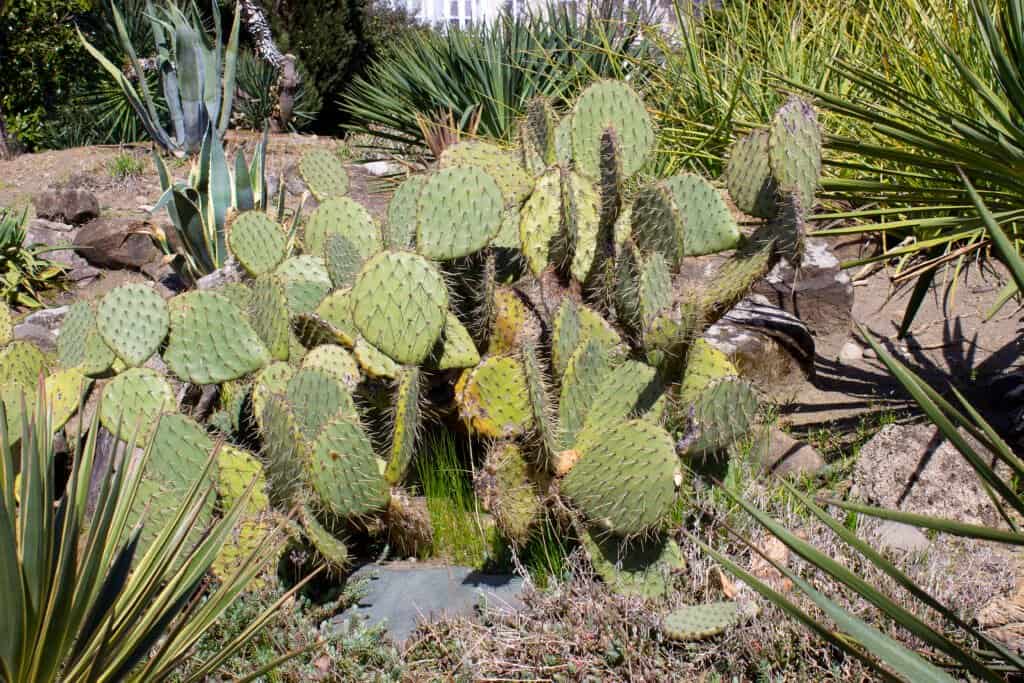
Also known as the “prickly pear” cactus, the
Opuntiaplant is a great option for those with snakes from arid environments.
©iStock.com/Marina Krisenko
2. Whipple Cholla (Cylindropuntia whipplei)
The whipple cholla is a cactus species native to the southwestern region of the United States, including Virginia. This cactus is known for its unique appearance, with long, thin, cylindrical stems covered in spines.
Its spines not only serve as a defense mechanism against predators, but they also help to reflect sunlight and reduce water loss through transpiration. It’s important to note that this cactus should be handled with care, as its spines can cause injury!
The whipple cholla has a high tolerance for hot temperatures but prefers cooler temperatures during winter, enduring temperatures as low as 10 °F.
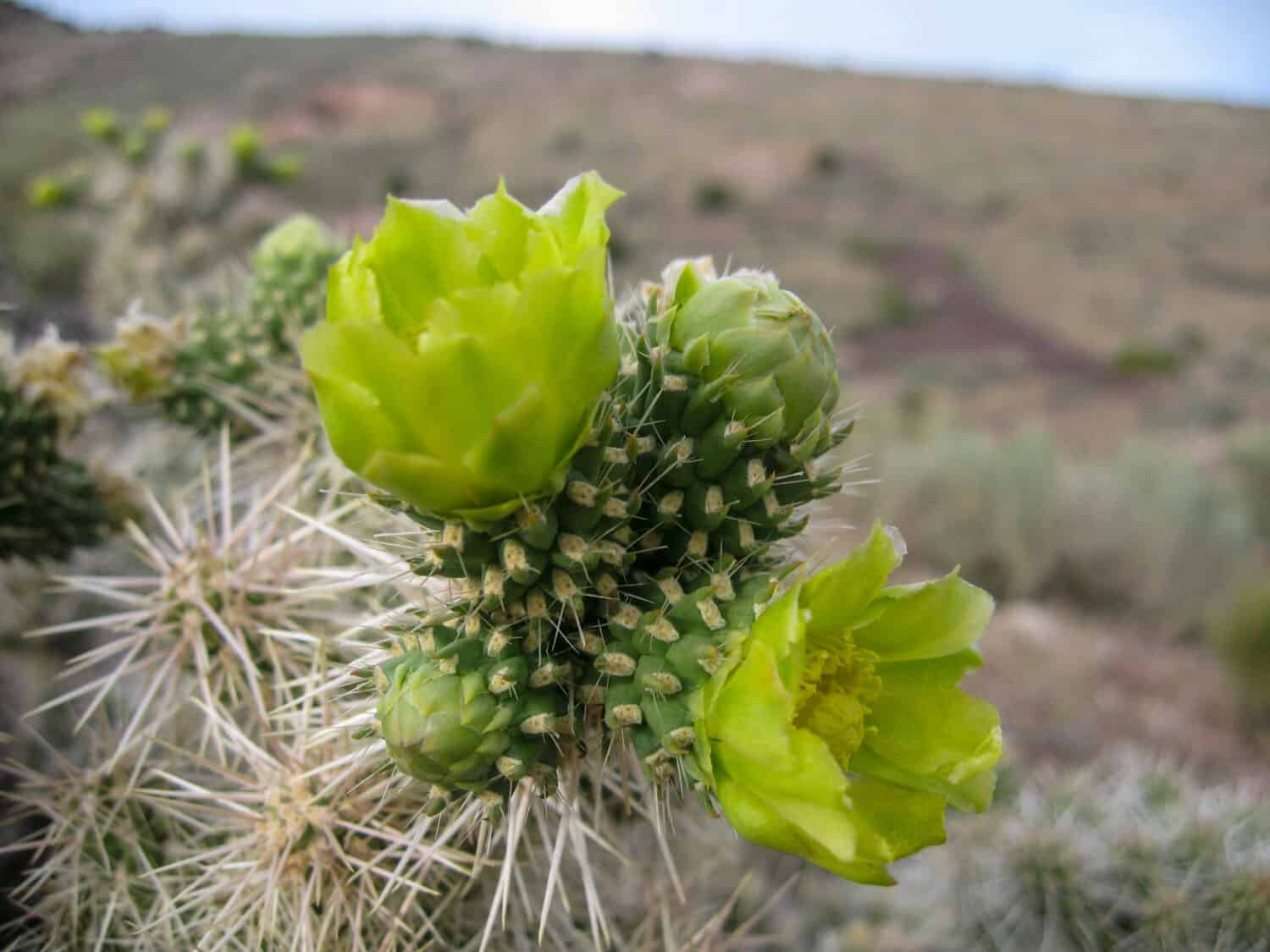
Whipple Cholla cactuses are perfect as defense mechanisms against predators.
©rawaccess/Shutterstock.com
3. Scarlett Hedgehog Cactus (Echinocereus coccineus)
The Scarlett hedgehog cactus is known for its bright red or pink flowers that bloom in the spring and summer, making it a popular choice for gardeners. The flowers are about three inches long and have a sweet fragrance that attracts bees and other pollinators. Following its blossoming period, the plant produces a red fruit that is safe for consumption.
In addition to its beautiful flowers, the Scarlett hedgehog cactus also produces small, edible fruits that are sweet and juicy. These fruits are a popular food source for wildlife, including birds and small mammals.
This cactus prefers well-drained soil and can tolerate dry conditions. It can also withstand cold temperatures, making it a great addition to gardens in Virginia. However, protecting the cactus from excessive moisture is essential, as it can cause rotting.
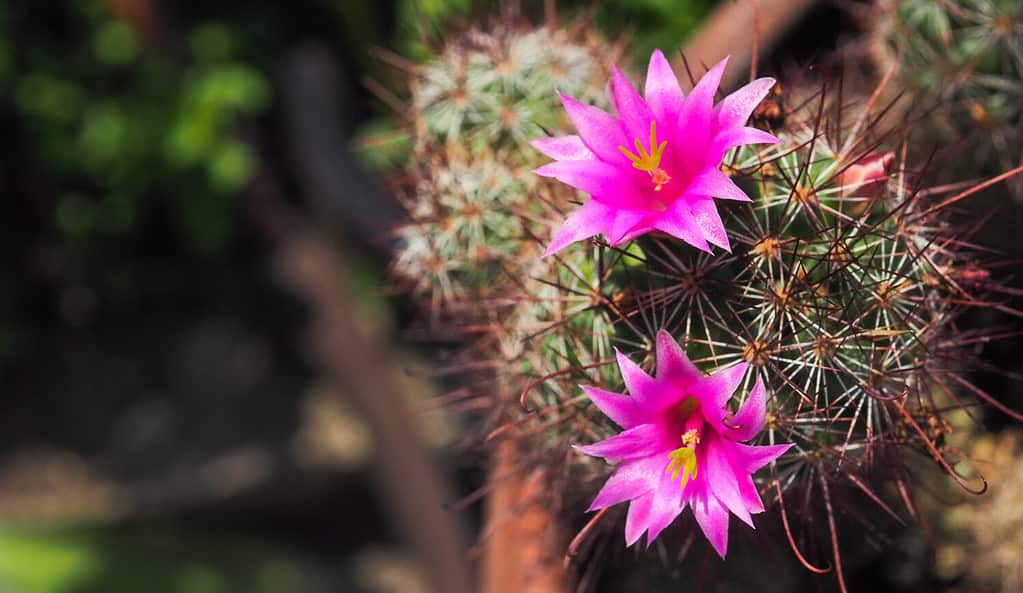
The Scarlett
Hedgehog
Cactus has a sweet fragrance that attracts various pollinators like bees and hummingbirds.
©Monontour/Shutterstock.com
4. Strawberry Hedgehog Cactus (Echinocereus engelmannii)
The strawberry hedgehog cactus, also known as Engelmann’s hedgehog cactus, is a small cactus native to the southwestern United States, including parts of Texas, New Mexico, Arizona, and even as far north as Colorado. However, it can also be grown in Virginia as long as it is given the right conditions.
The strawberry hedgehog cactus has a cylindrical shape with a green, ribbed stem that is covered in small spines. It is a popular plant among cactus enthusiasts due to its unique appearance and stunning pink flowers that bloom in the spring.
While the strawberry hedgehog cactus is not commonly found in Virginia, it can still be grown in the state with proper care. This cactus prefers well-draining soil and an area with plenty of sunlight. It’s also important to avoid overwatering, as the cactus is adapted to arid conditions. Protecting the cactus from frost and freezing temperatures is also important, as it is not very cold hardy.
In Virginia, the strawberry hedgehog cactus is best grown in containers or raised beds to provide ideal growing conditions. This cactus can also be grown indoors as a houseplant if placed in a sunny area and provided with proper care.
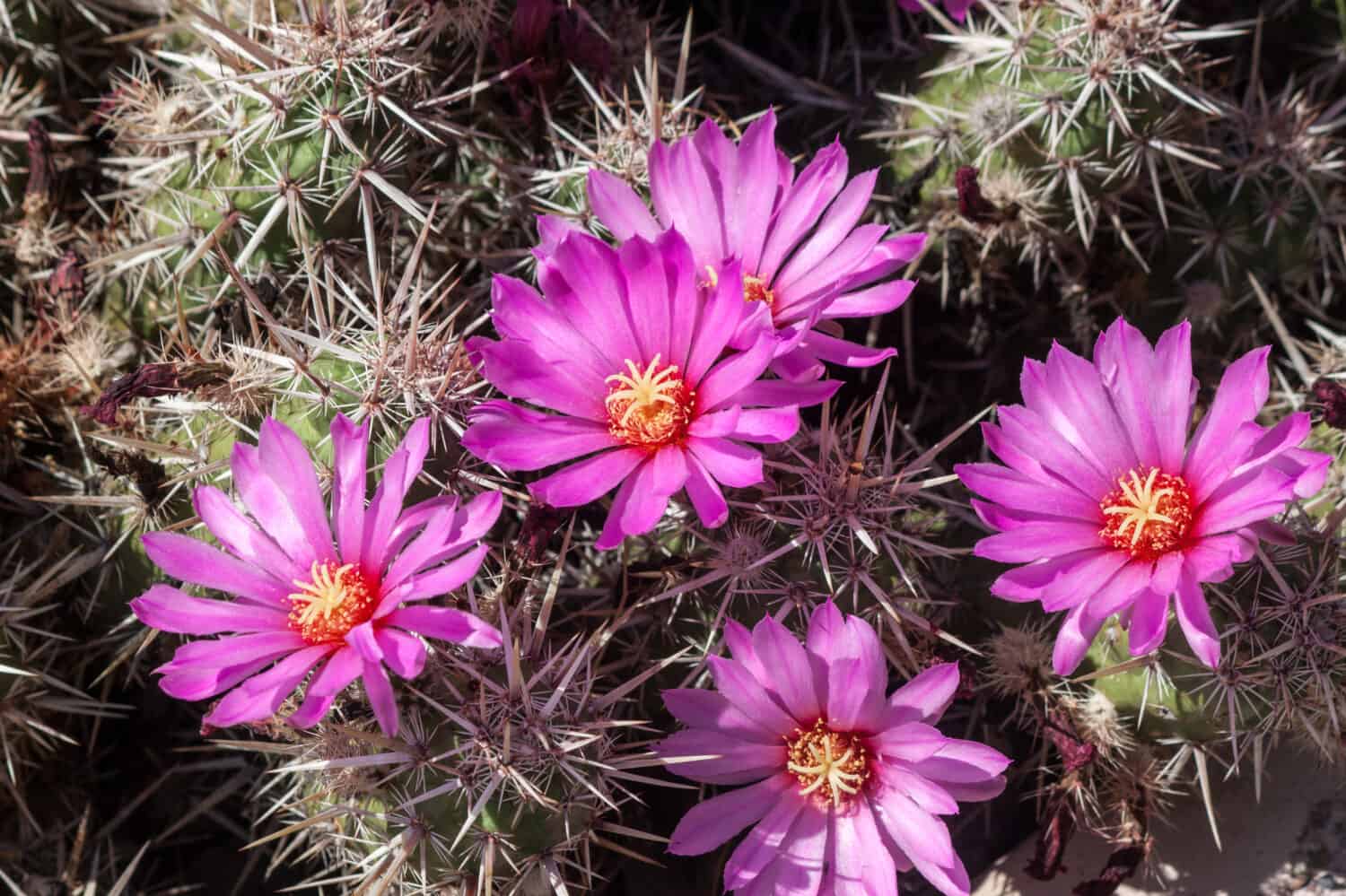
Although native to the southwestern US regions, the strawberry hedgehog cactus can grow under the right conditions in Virginia.
©CoachRad/Shutterstock.com
5. Nylon Hedgehog Cactus (Echinocerus viridiflorus)
The nylon hedgehog cactus is known for its cylindrical shape and yellowish-green or magenta flowers. This cactus is known for its unique appearance, with long, thin spines that resemble nylon threads.
One interesting fact about the nylon hedgehog cactus is its symbiotic relationship with ants. The cactus provides the ants with sweet nectar, while the ants protect the cactus from predators.
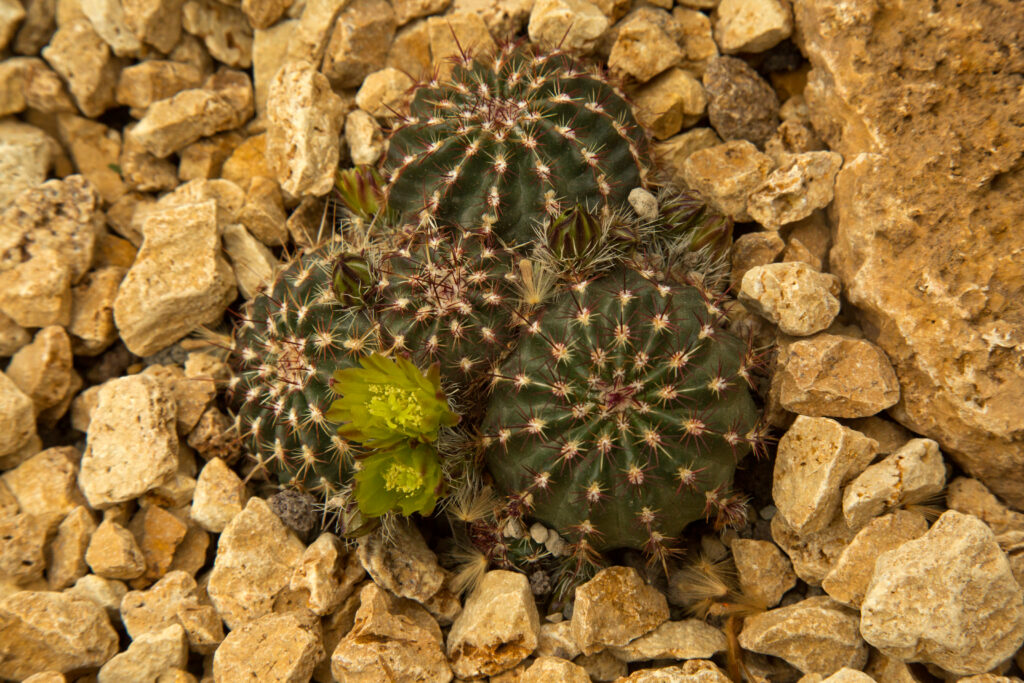
The nylon hedgehog cactus has a unique relationship with ants, who are attracted to the cacti for their sweet nectar. In return, ants protect the cacti against small predators.
©Podolnaya Elena/Shutterstock.com
Final Thoughts
Virginia is a great place to grow cacti due to its climate and rocky soils. The various cacti in Virginia are unique species that can add a touch of charm to any garden or home in the state. With proper care, cacti can thrive in Virginia and make great conversation pieces for visitors.
The photo featured at the top of this post is © iStock.com/Firn
Thank you for reading! Have some feedback for us? Contact the AZ Animals editorial team.







